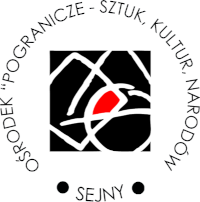THE MUSICIANS’ RAFT
New Generation
“The Musicians’ Raft” is a meeting of the world of the Jewish culture with its modern contexts and incarnations. It is, first of all, a musical meeting, but as always enriched with art and photo exhibitions, literary evenings, film screenings, lectures and discussions. Since its beginnings, i.e. since 2001, the main idea lying behind it has been the exploration of new horizons and alternative artistic spaces, other than those rooted in the past. Hence “the Raft” – a platform for a creative meeting heading towards other shores, always on the move. At first, the direction of its voyage was determined by the “New York to Sejny” vector. In this way, symbolically, we marked on its map both the place of the revival of klezmer music and the place were the borderland music – drawing on the coexistence of many cultures, including Ruthenian, Polish, Romanian and Gipsy culture – formed its roots. Then, Sejny became the destination of American musicians, based mainly in New York, descendants of the Jewish emigrants from Eastern Europe who knew the place of the birth of their own parents or grandparents only from family tales. Thanks to “the Raft”, often for the first time, they met with the fragments of the world which once generated the Yiddish culture, including klezmer music, the music they dedicated themselves to creatively merging it with other musical trends, such as jazz or hip-hop, lending it new sounds and sustainable vitality. Klezmers have always been people of the borderland; it is difficult to imagine that living in America they could turn a deaf ear to creative coexistence with their musical neighborhood. The participants of the conducted by them workshops and lectures were musicians from the countries of Central and Eastern Europe – Lithuania, Belarus, Ukraine, Russia, Romania and Hungary – who boarded „the Raft” to reach the world from before the Holocaust, towards the music almost completely erased from the present cultural landscape, and yet one so recently constituting an essential part of the spirituality of the cities and towns they grew up in.
Another denotation for the vector of voyage on “the Raft” was the fact that the meeting took place in a small country town, once largely inhabited by a Jewish community, within the walls of the White Synagogue and the Old Yeshiva, before the audience in large measure composed of the former co-inhabitants and neighbors of the East European Jews.
The current, now already the fourth, edition of The Musicians’ Raft is built on a new, other than previous, vector of journey. Symbolically, it finds its expression in the phrase “new generation”. This refers to an unusually curious cultural phenomenon which we may brand the new Jewish music nascent in Europe. The lasting for over two decades process of cultural transmission whose direction we conveniently dubbed the New York – Sejny vector (although equally suitable would probably be to qualify it New York – Krakow or San Francisco – St Petersburg vector), which comprised the previous editions of “the Raft”, bore fruit of the appearance of new currents of artistic explorations on the native European soil. The corypheuses of this “new generation” are musicians, often, though not necessarily, with Jewish roots, devoted to the creative explorations on the borderland of the Jewish cultural traditions (klezmer, Sephardic, Chassidic and other) with quite modern musical forms, not shunning experiment, electronic music or free jazz improvisation . It is them who become our guides on the journey towards the new shores the Musicians’ Raft chose to reach.
The artist who connects “the Old Raft” (he took part in its previous editions) with the “new generation” is the famous trumpeter Paul Brody. The musician who grew up in the environment of New York klezmers, though over the recent years performs mainly in Europe. This conscious choice of Europe results from his conviction that Europe offers an authentic space for the development of klezmer music and its symbiosis with other forms of contemporary music. Our 2010 raft will include also other corypheuses of the “new generation”: Mikołaj Trzaska and Raphael Roginski who try to discover completely new, autonomous sounds and contexts for Jewish music. The concerts and workshops will be joined by Turkish musicians: Cigdem Aslan and Tahir Papali, also harking back to the Sephardic traditions and fascinated with the borderland free jazz and different forms of Jewish music musicians Peter Ola Jorgensen (Denmark), Steve Stell (United States) Olie Brice (Israel) Mark Sanders (Great Britain).
One element of The Musicians’ Raft remains unchanged since its beginnings: it is the reference to the civilizational background without which it would be impossible to understand the cultural context and sources of even the most innovative explorations in the domain of the new Jewish music. It will constitute a seminar devoted to the Yiddish culture in Central and Eastern Europe, conducted by the irreplaceable Prof. Michael Steinlauf from Philadelphia.


